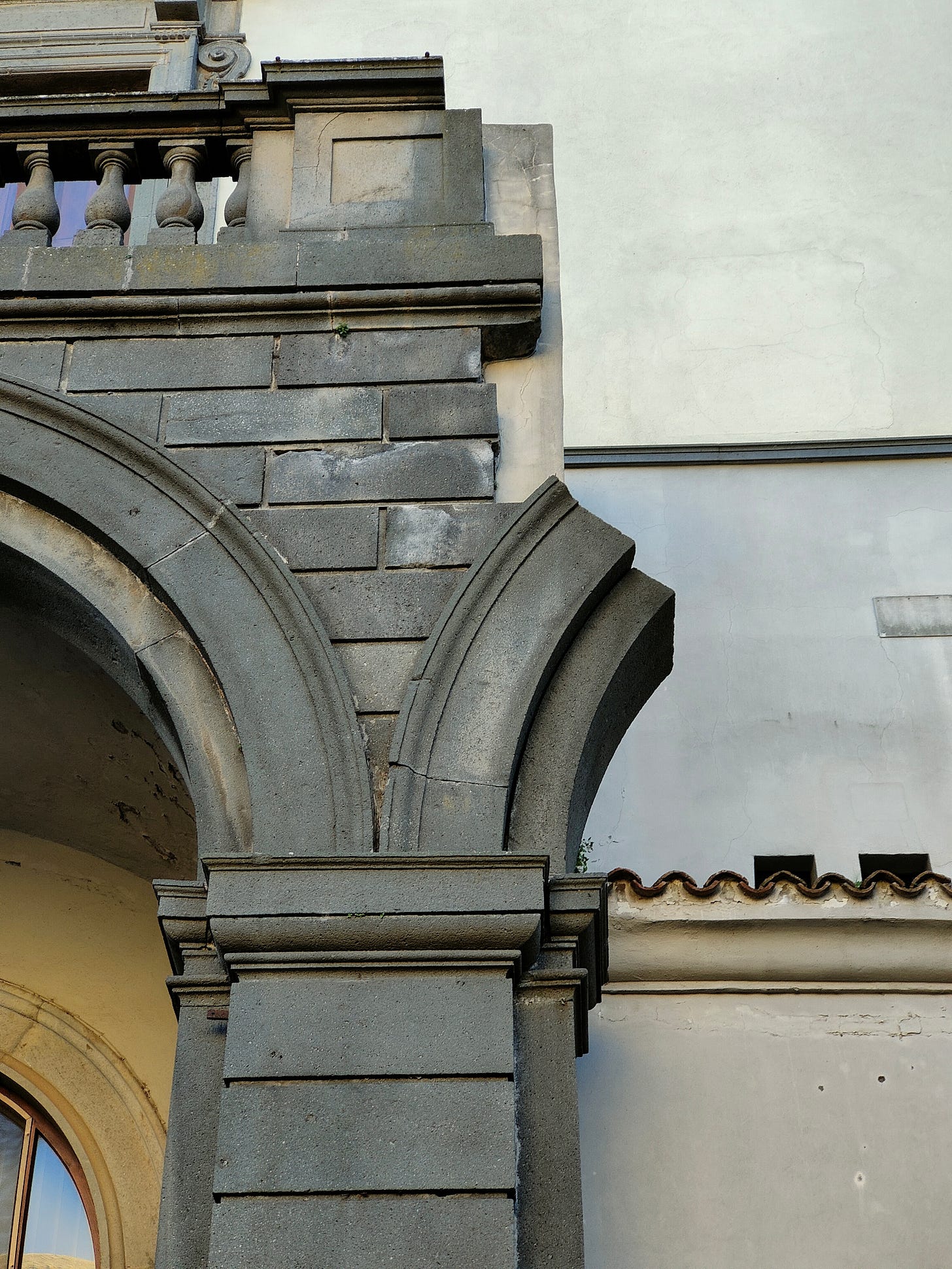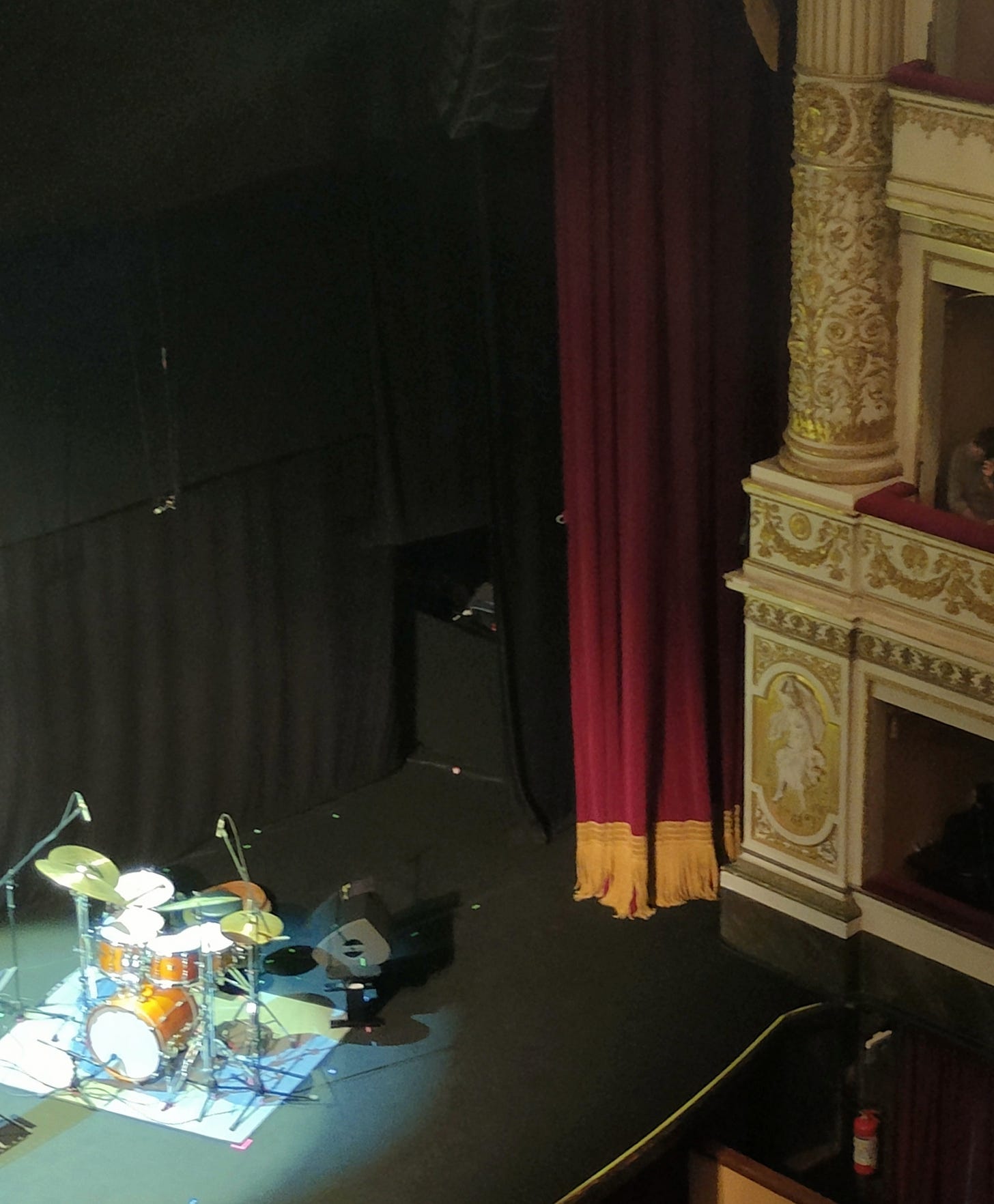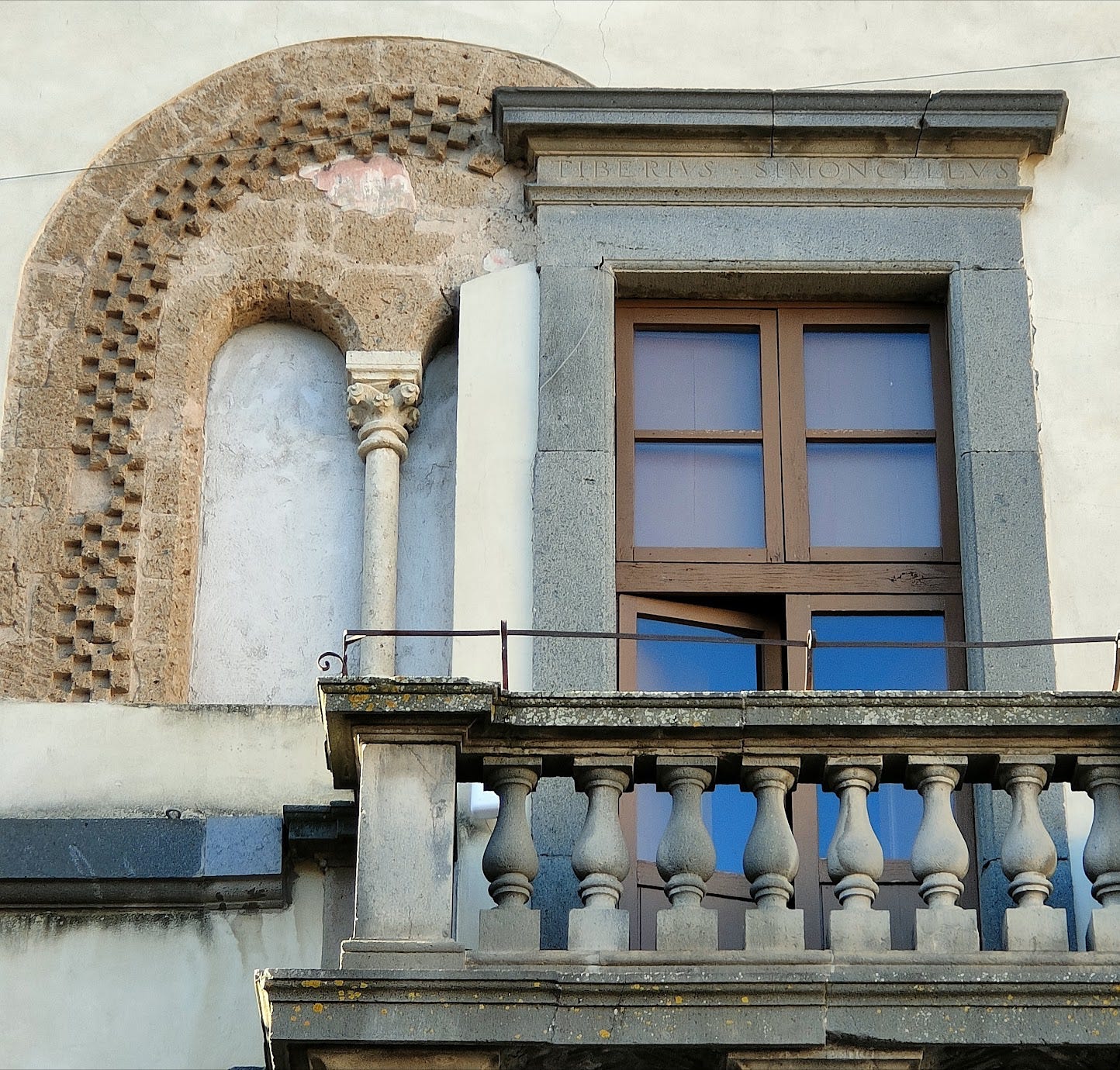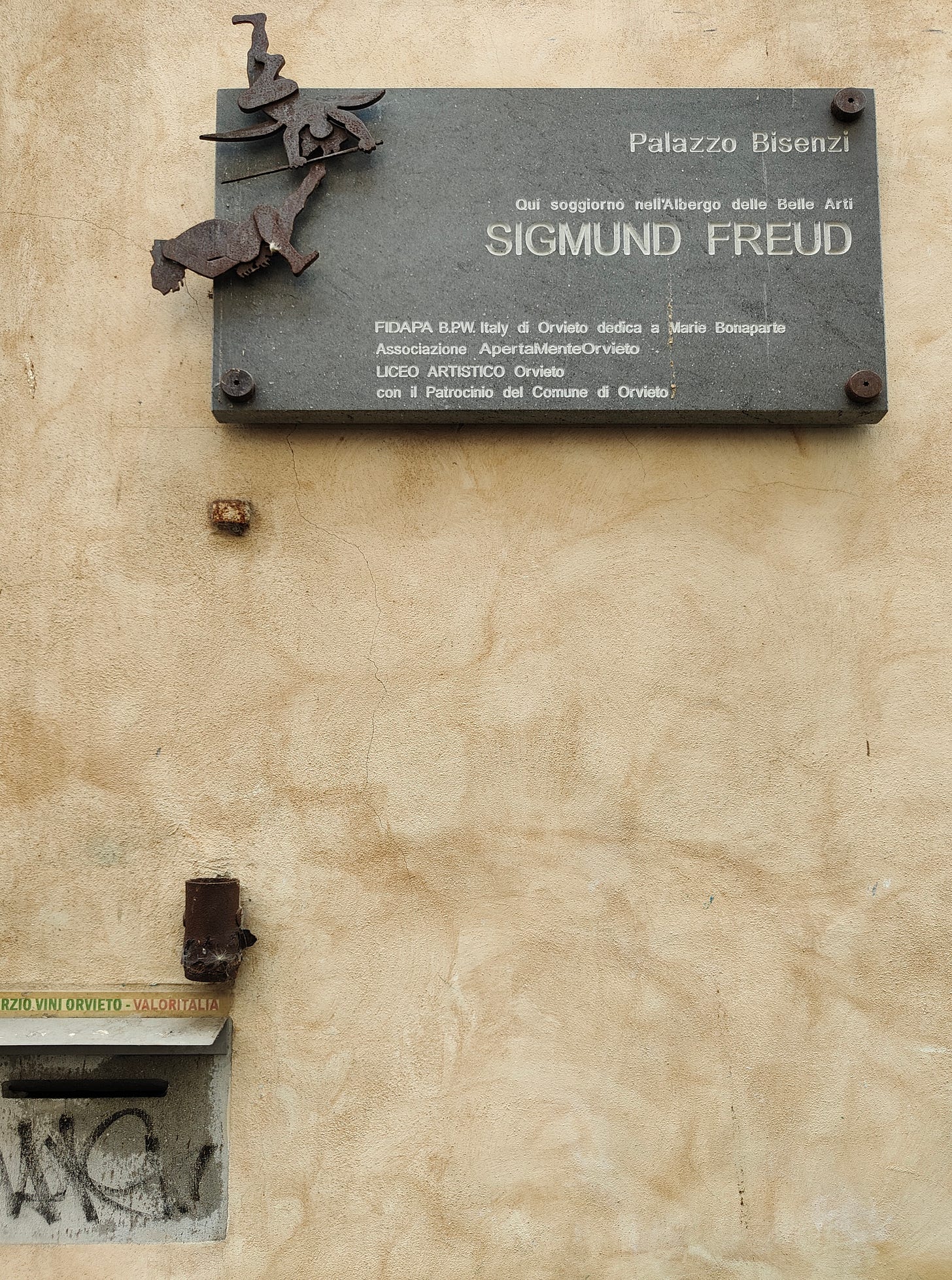Detour-ism #2. The Signorelli parapraxis: Freud, the Last Judgement and other questions about memory while grooving to some jazz at the Winter fest in Orvieto.
What happens when a city like Orvieto with a rich medieval-renaissance legacy, becomes an important fulcrum for modern thought? One way to find out is to experience the Umbria Jazz Winter Festival.
When driving up to Orvieto on our way to this year’s Winter Jazz Festival, I had the impromptu thought that a famous American chef, host of a very punk culinary show, had visited this Umbrian city to make a couple of his TV episodes. I thought I remembered his name, “—Boudin?” My companion who was driving laughed out loud. “It wasn't Boudin, but Bourdain, Anthony Bourdain!” She was right, I somehow repressed the correct name and replaced it with a word that sounded vaguely similar.
But as I thought about my mistake I remembered that not more then a few days earlier I had a conversation with my friend Kirsten who lives in Dusseldorf. She was curious to know more about Lyon, the French city she was planning to visit for the first time. Kirsten teaches at the Dusseldorf Academy and is very interested in architecture so I suggested she go see the modernist convent nearby, La Tourette, by the renowned Swiss-French architect Le Corbusier. At night they could find a good place to eat in the old quarters of the city. Lyon is especially famous for its blood sausage, “boudin.” So this might explain my slip… boudin, Bourdain?
We rode the public funicular up to Orvieto proper, which sits isolated atop an elevated plateau. From there we made our way to the historic center finally stopping in front of the Piazza Duomo so we could view the extraordinary black and white striped Italian gothic cathedral. The Duomo’s facade is particularly wonderful, especially the delicate bas reliefs depicting Genesis, dating back to the early 14th century. Inside the Duomo, in a rear chapel, is the “Last Judgement,” by Luca Signorelli, a truly outstanding late 15th century work of art. According to Giorgio Vasari, an early “biographer” of Italian artists, Michelangelo, before he began work on the Sistine Chapel in Rome, had closely studied this fresco series by Signorelli.
While standing in the sunlight in front of Orvieto’s Duomo, waiting to go to the day’s first jazz concert, my mind began to drift to Signorelli’s apocalyptic worldview, with its depictions of the anti-christ and realistically rendered skeletons and muscular bodies laboriously extracting themselves from the ground beneath. Then my eye caught a plaque on a sidewall reminding me that it was here inside Orvieto’s duomo that Sigmund Freud stood before Signorelli,’s “Last Judgement” and became totally awestruck by its depiction of the end of the world. Freud left Orvieto believing he had seen one of the greatest artworks of all time.
But then, about a year later when Freud was traveling to Herzegovina by train, chatting with a fellow traveller, he suddenly found himself experiencing a kind of mental lapse, he could no longer remember the name of the artist he had so admired in Orvieto. He would later write:
“In 1898 I vainly strove to recall the name of the master who made the imposing frescoes of the ‘Last Judgement’ in the Dome of Orvieto. Instead of the lost name—Signorelli— two other names of artists —Botticelli and Boltraffio—obtruded themselves, names which my judgement immediately and definitely rejected as being incorrect.”
As Freud struggled to understand just what had happened to his own memory, he began to conjecture on the nature of language, word images and death. These further tribulations would eventually end up in his 1901 publication “The Psychopathology of Everyday Life.” It is from Orvieto we get the “Signorelli parapraxis,” whereby Freud realizes that it could be something as simple as the word, or the image of the word, that sets traps for one’s memory: Herzegovina, according to Freud’s own self-analysis, begins with the German word “herr,” meaning mister in English, but that translates into Italian as “Signor” — Signorelli. Freud sees this as one of the odd transliterations that acted to displace his memory. If you take into consideration everything else that Freud admitted to observing when he gazed on the “Last Judgement,” it should come as no surprise that the father of psychoanalysis allowed himself to succumb to Signorelli’s images of eroticism and death.

Strangely enough, as I walked around Orvieto between jazz gigs, I began to see that the city itself was a jumble of confused visual juxtapositions, overlapping architectural memories, truncated structural orders and dissonant landscapes. That got me thinking, what if Freud, on his visit to Orvieto, some 126 years ago, was also struck by the city’s innate incoherence? Was the city itself a stage for loss and disorientation?

What about myself? I was here to attend a series of jazz concerts, to kind of chill out with instrumental and electronic music. Musicians as well as members in the audience were coming from Italy and all over the world to occupy Orvieto in the same time and space. And wasn’t jazz a medium that was spontaneous, cacophonous, atonal, backbeat? Was I actually succumbing to a kind of musical form of auratic dissonance? Could Jazz be an interpretation of the Freudian slip?

FURTHER LINKS:
The Signorelli parapraxis wikipedia
Nicholas Fox Weber, “Freud's Trip to Orvieto: The Great Doctor's Unresolved Confrontation with Antisemitism, Death, and Homoeroticism; His Passion for Paintings; and the Writer in His Footsteps” ( Bellevue Literary Press, May 9, 2017)









